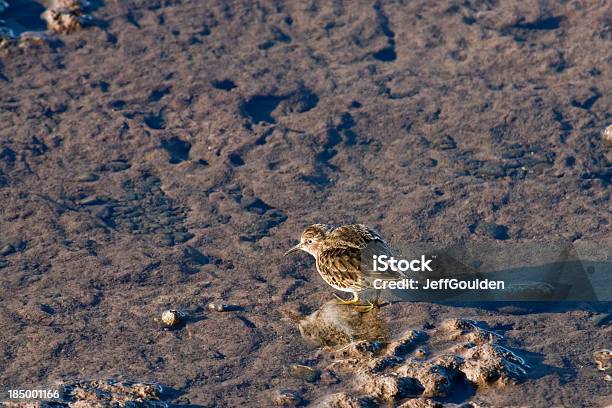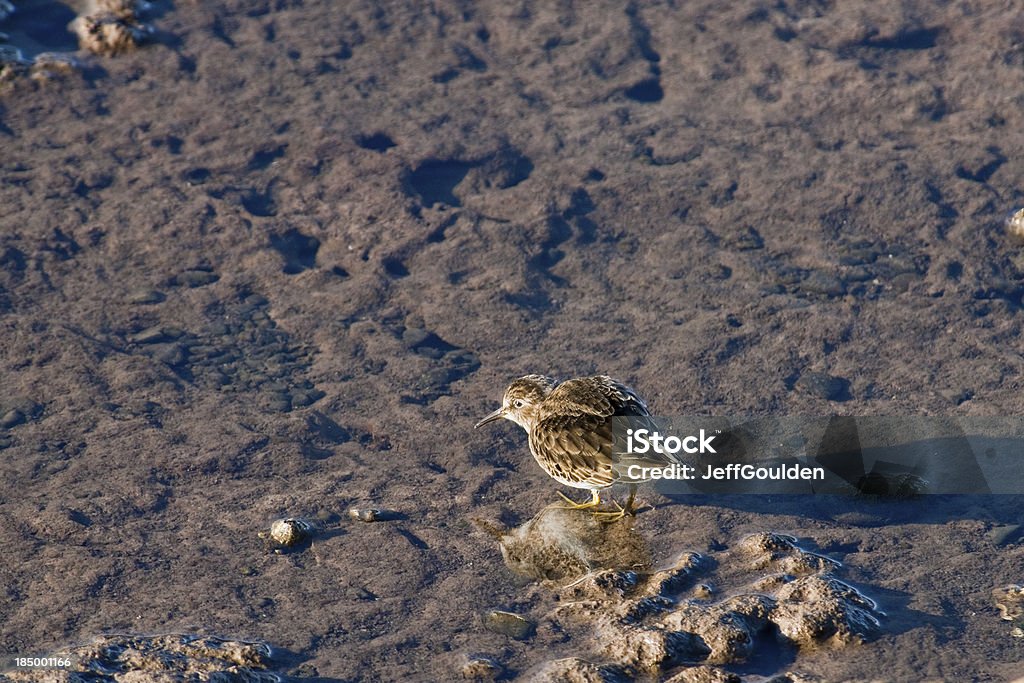Description
The Least Sandpiper (Calidris minutilla) is the smallest of all the shorebirds. They have a short thin dark bill and greenish legs. Adults are brown with a white belly and dark brown streaks on top. They have a light line above the eye. The least sandpiper breeds in tundra or bogs in northern North America where they nest on the ground close to the water. The female lays four eggs in a shallow depression lined with grass and moss. After leaving the nest, the young birds feed themselves. They are able to fly within two weeks of hatching. The least sandpiper migrates in flocks where they spend the winter in the southern United States, Mexico, Central America, the Caribbean and northern South America. Their diet consists of small crustaceans, insects and snails which they pick up by sight or probe for in mudflats. This least sandpiper was photographed while probing for food in the mud at the Nisqually National Wildlife Refuge near Olympia, Washington State, USA.


